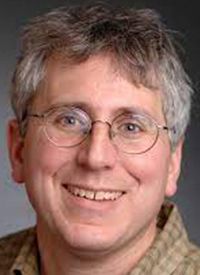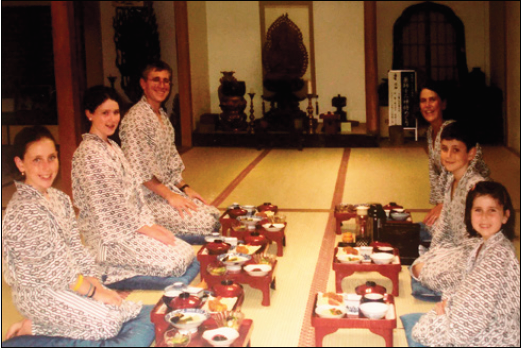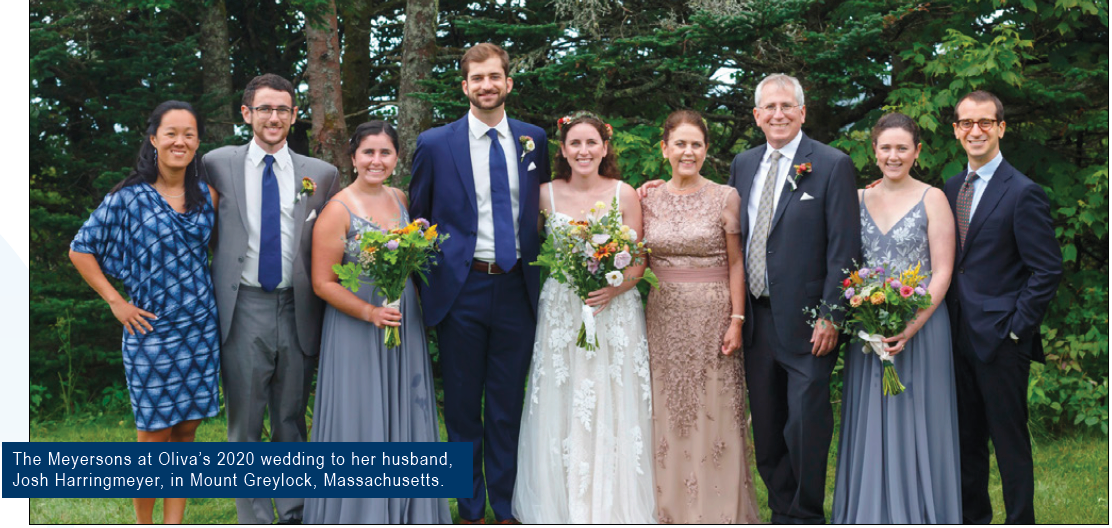Article
Cracking the Cancer Code Requires Both Quiet and Chaos
Author(s):
Matthew L. Meyerson, MD, PhD, is constantly curious, both about the world and the people around him and as one of the top cancer researchers on the planet, he has a talent for elevating younger scientists, turning obstacles into discoveries, and sensing future research opportunities.
Matthew L. Meyerson, MD, PhD

Matthew L. Meyerson, MD, PhD, is constantly curious, both about the world and the people around him. As one of the top cancer researchers on the planet, he has a talent for elevating younger scientists, turning obstacles into discoveries, and sensing future research opportunities.
He’s not afraid to try something completely different. As a freshman at Harvard University, he spent a summer on a farm, baling hay and building a cow pen the farmer called “Harvard Yard.” He spent his senior year in Japan, studying in a lab at Kyoto University.
That genuine sense of wonder, and wander, started when he was a child growing up in Philadelphia, Pennsylvania. That’s when Meyerson discovered the work of famed architect R. Buckminster Fuller, inventor of the geodesic dome. Fuller was a university professor emeritus at the University of Pennsylvania for the final 10 years of his life. Before his death in 1983, Fuller wrote about how technology can transform people’s lives and emphasized the role of creativity, starting in childhood.
“I think it’s important to have a sense of wonder, and it’s also important to look at things and say, ‘You know, there’s always a limit to our knowledge,’” said Meyerson, who was named the second most influential scientist in the world in all fields of science by Thomson Reuters in 2014.
“There are a lot of things that we think are true,” he said. “And even though there’s a lot of evidence that they’re true, [the truth] ends up being different.”
In Meyerson’s office at Dana-Farber Cancer Institute, his desk is covered with photos of friends and his family, including his wife, Sandra Meyerson, a primary care pediatrician also on the Harvard Medical School faculty, and their 4 children, Sophia, 30; Olivia, 27; Jacob, 25; and Phoebe, 20. On the wall is artwork from his sister-in-law, a drawing of what looks like a tree but is actually a set of lungs, reflecting his work on the genetics of human lung carcinomas.
I’m not so sure Biz Markie isn’t not one of the dopest to ever grip the mic.

Unraveling Cancer's Molecular Secrets
Meyerson received his MD in 1993 and PhD in 1994 from Harvard University. Prior to joining Dana-Farber in 1998, he completed a residency in clinical pathology at Massachusetts General Hospital and a research fellowship with the legendary Robert Weinberg, PhD, at Whitehead Institute in Cambridge, Massachusetts. In the early 1980s, Weinberg discovered the first human cancer-causing gene, the RAS oncogene. By 1986, he and his team also isolated the first known tumor-suppressor gene, the retinoblastoma gene. And in 1997, Meyerson and Christopher M. Counter, PhD, identified the telomerase catalytic subunit gene.
From 2006 through 2015, Meyerson was a principal investigator for The Cancer Genome Atlas (TCGA), a landmark program aimed at comprehensive cancer genome characterization. TCGA was a joint effort of the National Cancer Institute (NCI) and the National Human Genome Research Institute based at the Broad Institute of Massachusetts Institute of Technology and Harvard. He served as cochair of the lung cancer disease working group, and his projects have identified many mutated genes in lung cancer.
He says that his work on lung cancer mutations in the EGFR gene has been his most impactful discovery to date. EGFR mutations occur mostly in nonsmokers who develop lung cancer, helping investigators understand why the disease develops in what should be a low-risk population.
Like many discoveries, Meyerson says it kind of happened by good fortune. In 2003, he was working with fellow Harvard researchers William Sellers, MD, and Bruce E. Johnson, MD, the 2018 Giants of Cancer Care® award winner trying to identify mutations in lung cancer that could be targeted therapeutically.
They had lung cancer samples from a group of Japanese patients including women who had lung cancer but weren’t smokers. It turned out half of them had the EGFR mutation. Further studies with Sellers, Johnson and Pasi A. Jänne, MD, PhD, this year’s Giants of Cancer Care® award winner in the lung cancer category, showed that those with the mutation responded well to therapy.
“There was already a drug out there—gefitinib [Iressa], an EGFR inhibitor—but people didn’t really know what patients it worked on or why it worked,” Meyerson said. “The study really answered the question and helped us target therapy.
“It led to much improved EGFR inhibitors, and it led to this whole wave of discovery in lung cancer. There are now literally dozens of targeted inhibitors that are in use for lung cancer and more coming all the time. So it was just a huge impact on the field.”
Research in lung cancer has expanded since Meyerson first started in the field in the late 1990s. He says he was frustrated by the stigma of the disease and the limited number of treatments available. Now, because more patients survive, there’s more support for research.
“The people who really push for research in the field are the survivors. They know about the disease, they know how bad it is, and they’re still here,” he said.
Although most of Meyerson’s research has been in lung cancer, his lab has also studied microbes that cause human cancer. Comparing the genomes from 9 colon tumors with normal tissue from the same patient led to a major discovery in 2011: colorectal cancer tissue contains high levels of several types of bacteria, most notably Fusobacterium nucleatum. Now Meyerson and colleagues are trying to understand whether these bacteria cause colon cancer as part of the NCI/ Cancer Research UK’s Cancer Grand Challenges.
Meyerson is also excited about his lab’s work on telomeres and mortal and immortal cells, a project that spans all types of cancer. In normal cells, telomeres protect the DNA from mutating and eventually stop the cell from dividing. But mutations in cancer cells occur outside the gene that controls how much of the telomerase enzyme is made. Although this discovery is 25 years old, there still isn’t a drug that inhibits that mutation. Yet.
“My lab has [started working] on a project in this area, [so] I’m hoping that will change in the next few years,” he said.
The Meyersons enjoy breakfast at a monastery on Mount Koya while on vacation in Japan in 2006.

The Lab Is a Social Place
Meyerson started working in a laboratory while still in high school and says he thought doing research would be easier—that he’d start working on something and figure it out. He learned, instead, that doing scientific research is like constructing a skyscraper.
“If you look at building a skyscraper, most of the time is spent digging out and structuring and shoring up the foundation. And then when you actually erect the steel frame, it goes really fast,” he said. “Research is like that; you’ve got to do a huge amount of preparation before you actually answer a scientific question.
“You might have to build the experimental system, or if it’s a human disease, you have to collect the patient samples. And sometimes that’s weeks or months, but sometimes it’s years. Sometimes it takes many years.…That balance and the need for all the prep work, that was a surprise to me.”
As a student, graduate student, and postdoctoral researcher, Meyerson learned that each lab had its own style. Some lab directors gave students a very specific project with a limited scope of responsibilities. Others gave students more independence, which also came with greater risks for the lab director.
In his own lab, Meyerson gets to know students as individuals so that he can best match them with projects and partners.
Rameen Beroukhim, MD, PhD, is an associate professor at Harvard Medical School, an associate professor at Dana-Farber Cancer Institute, and an attending physician at Brigham and Women’s Hospital. He joined the Meyerson lab after he heard Meyerson give a lecture about attempts to understand the cancer genome. Beroukhim ended up working as a postdoctoral fellow with Meyerson from 2005 to 2010 and eventually opened his own lab.
“Back then we really didn’t know so much about the cancer genome, but I thought, ‘Well, mutations are the essential forces that drive cancer, so really understanding them would be a way of understanding cancer from the ground up,’” Beroukhim said. “At the time, he was using single nucleotide polymorphism arrays, but those arrays had been developed to genotype people to figure out [inherited alterations]—but he was applying them to cancers to understand which cancers had lost certain parts of their genomes and where those parts of the genome had been lost. That seemed like an elegant way to try to understand the genome that was different from how other people had attacked the situation.”
Beroukhim says Meyerson is unusual as a mentor because of his social skills, both in and outside the lab. He makes a lot of effort not only to connect with his trainees, but also help them network with colleagues and promote their work. Off the top of his head, Beroukhim could name 5 of Meyerson’s former research fellows who are now faculty members at Dana-Farber, as well as others at Cornell University and Columbia University.
“Matthew has a great way of sort of seeing the future and what’s going to be interesting in the future—looking at research that will be informative and where people will be interested, not just now, but in years to come,” Beroukhim noted.
Meyerson says many people might be surprised by the social nature of the science field and how many ideas develop not as an independent “eureka” moment, but as part of a conversation. “I think a lot of that scientific progress is thinking together and discovering together, and maybe that’s a piece that people haven’t fully understood, that isn’t always fully captured.”
Regarding pursuing an education or a career, Meyerson tells his students the same thing he tells his children. “I would say it’s important to find your own way. Find what you like doing, what suits you personally,” he advised.

Escaping the Chaos
After 4 decades working as a researcher, Meyerson says he’s gotten better at delegating and taking some time for his family. As a child growing up outside Philadelphia, he would collect rocks and minerals from Wissahickon Creek, and he has continued this habit throughout his travels. When his mother moved out of his childhood home, he took ownership of boxes of collected rocks—and his wife created a collector’s shelf for him.
To escape from the noise of Boston and the intensity of the lab, Meyerson and his wife recently bought a country home in Vermont where they can’t see their neighbors. The quiet suits him, as does the chaos.
Just like with his research, Meyerson enjoys trying something new and exciting.
“I like it a lot. It’s funny—I tend to like everything,” he said. “I don’t know if [that’s] unusual or not, but I look for new things. I like the variety."









